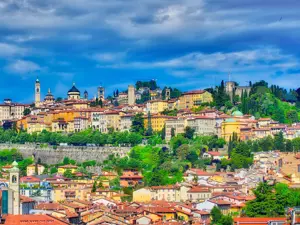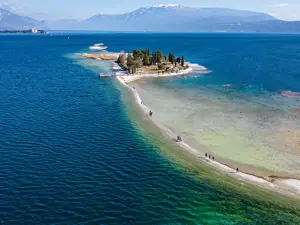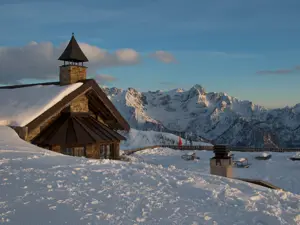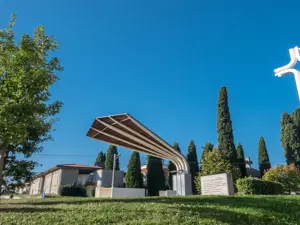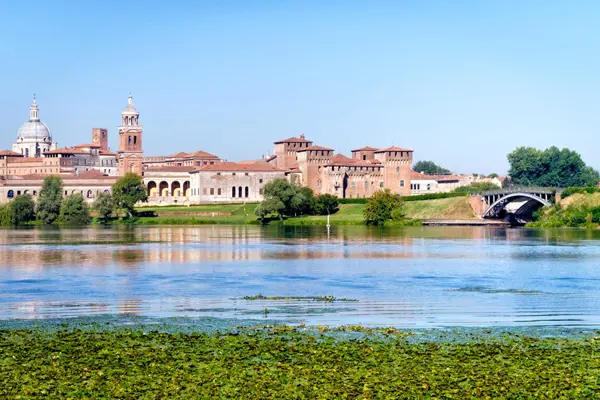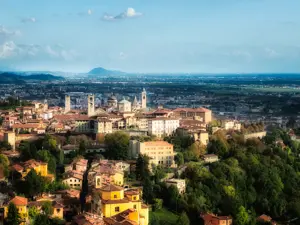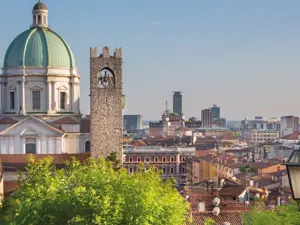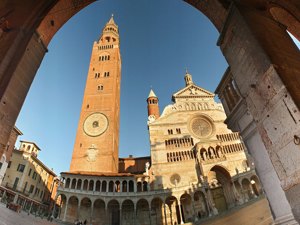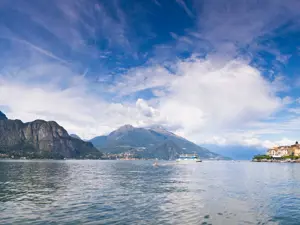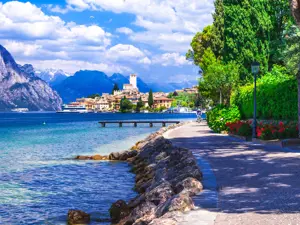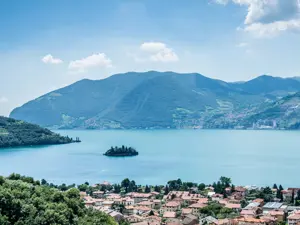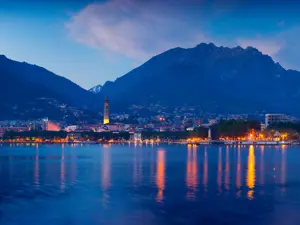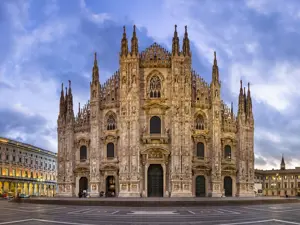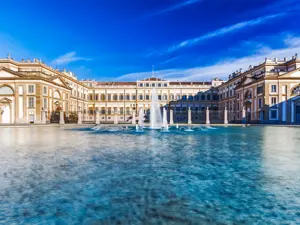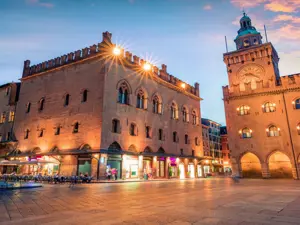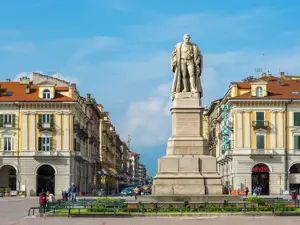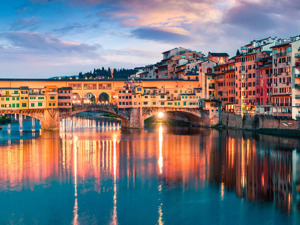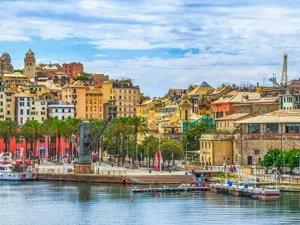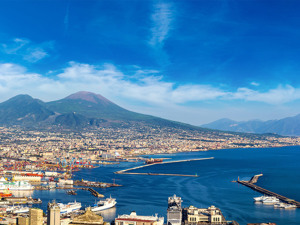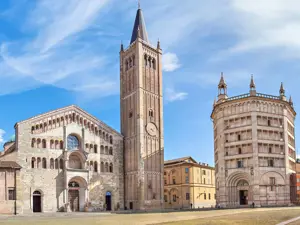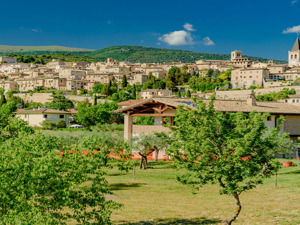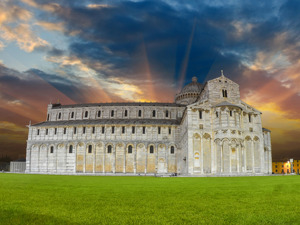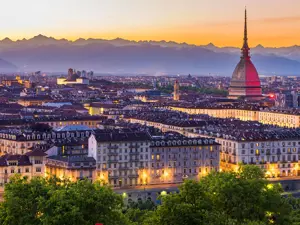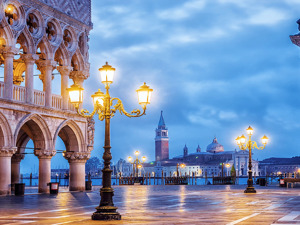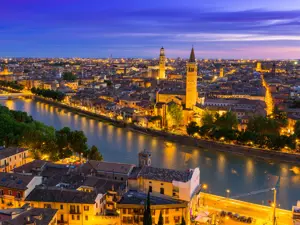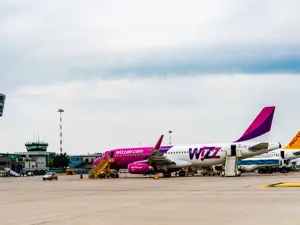Sotto il Monte, the town of the "Good Pope"
In his film “L’albero degli zoccoli” (The Tree of Wooden Clogs), Palme d’Orwinner of the Cannes Film Festival in 1978, the director Ermanno Olmi described the life of a family of poor peasant people from Bergamo in the nineteenth century. This is the same area and the same situation experienced by a person who marked the history of the Church: Pope John XXIII, or Angelo Giuseppe Roncalli, soon to be proclaimed a saint, who was born only 18 kilometres from Bergamo in the small town of Sotto il Monte, which was officially named Sotto il Monte Giovanni XXIII in 1963.
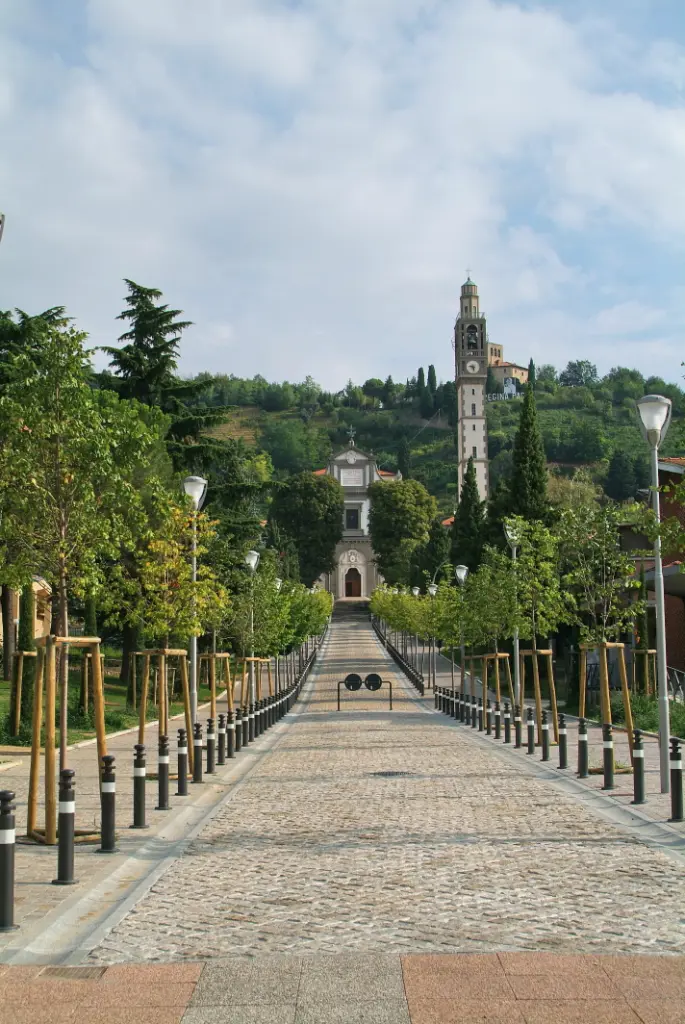
San Giovanni XXIII Sanctuary in Sotto il Monte
Today visitors to Sotto il Monte see a town dominated by the Tower of San Giovanni, a fortification whose origins date back to the year 1000. The top of the tower affords a view over the entire plain between the rivers Adda and Brembo. It was most certainly used as a watch tower and for defence until it was transformed into a bell tower and the Church of San Giovanni was built alongside.
The building, which was built in the Romanesque style, like the tower, was demolished in 1904 and the building materials were used to construct - in a more accessible place for worshippers - the current parish church, also dedicated to San Giovanni Battista (St. John the Baptist). This church was consecrated by the then Bishop Angelo Giuseppe Roncalli in 1929, Apostolic Visitor in Bulgaria, and is the first point of reference for pilgrims visiting the town.
The Casa del Pellegrino (House of the Pilgrim) offers hospitality services and all the information necessary for a comprehensive visit. The flow of pilgrims, which was always intense, has been continuously increasing from 27 april 2014 when the “Good Pope” Giovanni XXIII is proclaimed a saint in piazza San Pietro at Rome by pope Francesco.
The Garden of Peace is a walking path that retraces the life and sanctity of the Pope, allowing us to connect with his spirituality. Embedded in the pavement are brass plaques bearing some of Pope John's most significant phrases, through which visitors can delve deeper into the stages of Roncalli's vocation. The step-by-step journey, which winds around the garden, concludes in the Crypt Oboedientia et Pax, where the evocative records of the late Pope are located: a cast of his face and hand carried out immediately after his death by Giacomo Manzù, the great artist, and the crucifix that the Pope kept in his bedroom.
Another site to visit for worshippers is the Chapel of Maria Regina della Pace, the altar of which is made from a Paleo-Christian sarcophagus found in the basilica erected in Rome by the Emperor Constantine in honour of St. Peter.
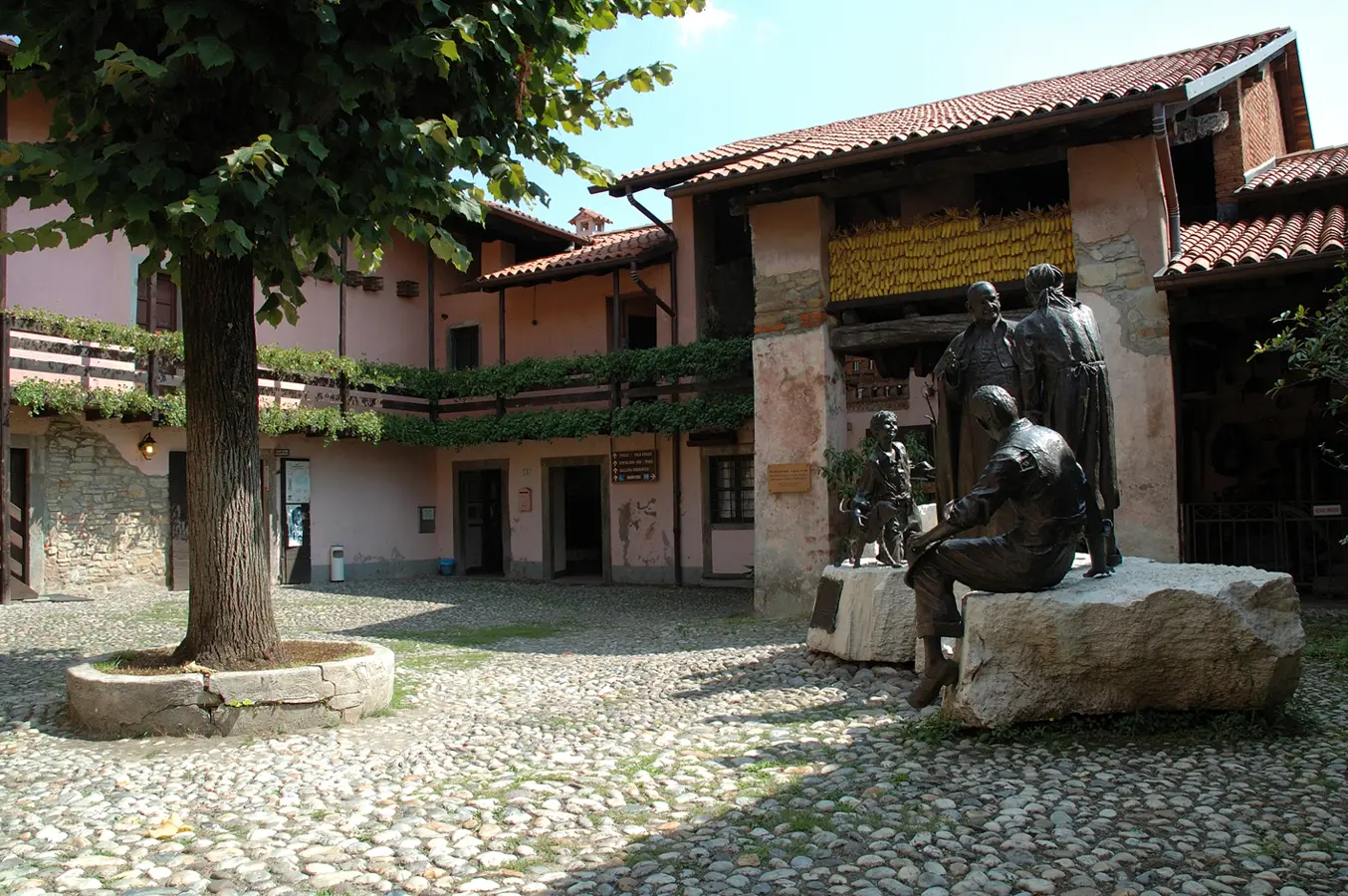
The farmstead of the Pope
An ideal tour on the trail of Pope John XXIII in his hometown focusses on the farmstead where, on 25 November 1881, Angelo Giuseppe Roncalli was born. His family were modest farmers: Angelo, the fourth of twelve children, lived there until he was 10 years of age. The building has retained its original features: a wide arched entrance gate opens onto a farmyard from where a rustic wooden staircase leads to the upper floor. Here you can visit the room where the future Pope was born.
A short distance away is the beautiful Church of Santa Maria in Brusicco, where the small Angelo was baptised on the evening of his birth. The church is built in the Romanesque style with some Gothic elements. It dates back to the fifteenth century and the remains of exquisite sixteenthcentury frescoes survive on its walls. It is dear to the memory of Pope John because the future Pope celebrated his first Mass here in 1904. As a child, Angelo and his mother would often visit the Sanctuary of Madonna delle Caneve, known also as the “cantine” (cellars), situated on the slopes of Mount Canto.
The perfect conclusion to this tour among history and spirituality is the beautiful residence of Ca’ Maitino, where Angelo Giuseppe Roncalli, between 1925 and 1958 would stay in the summer. When he was elected Pope, the family of the Scotti barons, who were the owners, decided to donate the old fifteenth-century building to him. Here his secretary Mons. Loris Capovilla began gathering records and souvenirs and transforming Ca’ Maitino into a unique museum.
The medieval town of Olera
Sotto il Monte is not the only place in Bergamo visited by worshippers at this time of the year. A few kilometres from Bergamo, nestled on the slopes of Mount Canto (known as Canto Alto (upper Canto) to distinguish it from the hill), lies the medieval town of Olera, whose original features have been preserved thanks primarily to the fact that its lanes are so narrow cars find it impossible to pass. Olera is located at the entrance to the Seriana Valley. From the town of Alzano Lombardo, a road climbs rapidly to the village of Monte di Nese, situated in an extremely panoramic area. After a few kilometres, a road to the left leads to the town. Tommaso Acerbis, a Capuchin monk known as Brother Tommaso da Olera, lived here in the seventeenth century. This religious man performed his extraordinary charitable work in the Veneto area and the valleys of the Tyrol. Held in high regard, he was the spiritual guide of the Archduke Leopold V of Austria and his wife Claudia de’ Medici.
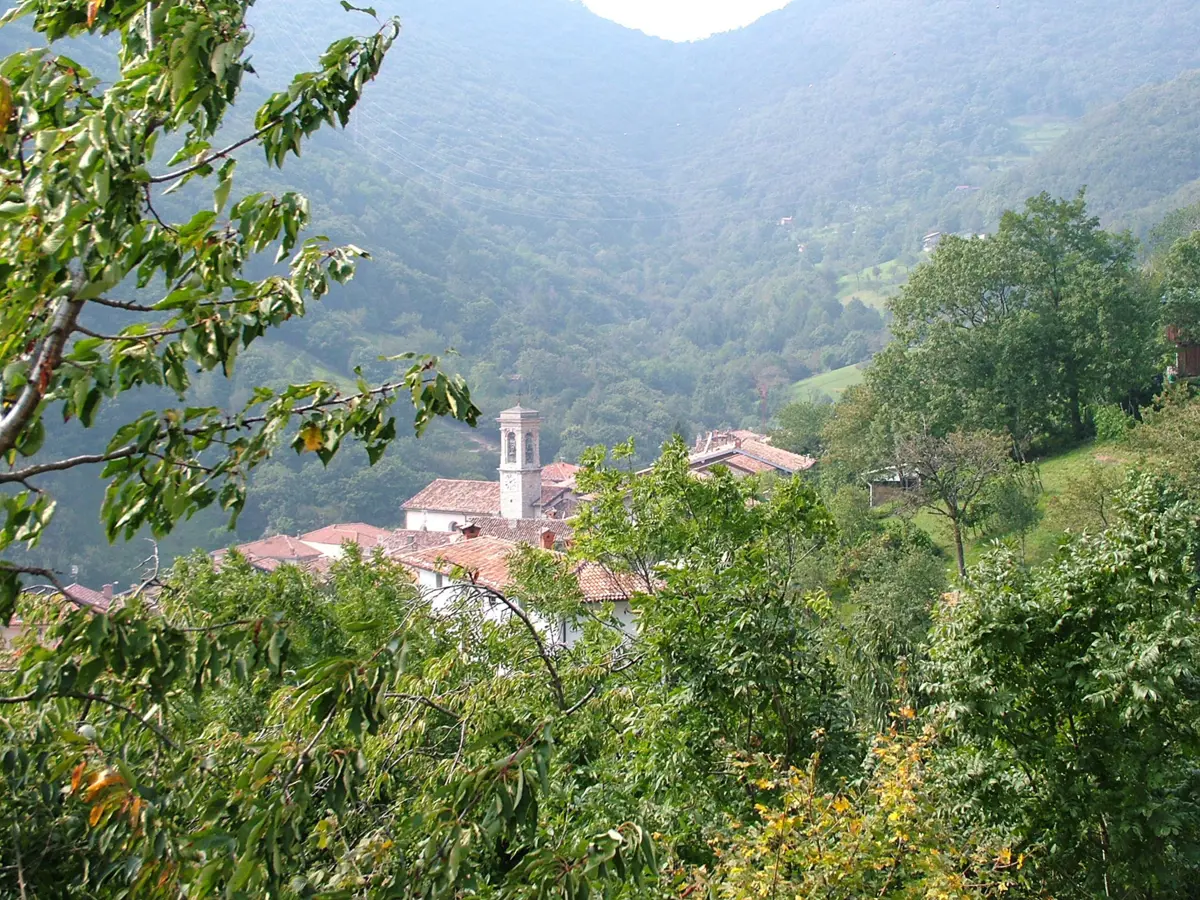
A stroll among the alleyways of the village of Olera offers some very interesting sights. The parish church is a must-see destination. Built in the fifteenth century and restored in neo-Gothic style in 1873, it preserves a very beautiful polyptych by Cima da Conegliano, one of the major exponents of Venetian painting in the fifteenth century. The polyptych, which dominates the interior of the church, is made up of nine panels in a carved gilt frame and features, in the centre, an original sculpture of St. Bartholomeo, patron saint of the village. This work has received much attention from critics and art historians because it is considered his first work and is one of only three polyptychs by the great Venetian painter to have survived. It remains a mystery as to how it came to this small village, which, up until only a few decades ago, was almost unreachable.
Text by: Pino Cappellini
Photos: Visit Bergamo / Sisterscom / Shutterstock
Copyright © Sisterscom.com / Turismo Bergamo
Photos: Visit Bergamo / Sisterscom / Shutterstock
Copyright © Sisterscom.com / Turismo Bergamo
Published on The Key to Bergamo Magazine
Reproduction reserved.
Tourism Board
www.visitbergamo.net
Tourist Office
Promoisola
Via Legionari di Polonia, 5
Ponte S. Pietro (Bg) - Italy
www.isolabergamasca.org
Casa del pellegrino
Viale Pacem in Terris, 30
Sotto il Monte Giovanni XXIII (Bg), Italy www.papagiovanni.org
T. + 39 035 43 600 46.
Partnership with Booking.com
Where to sleep in Sotto il Monte
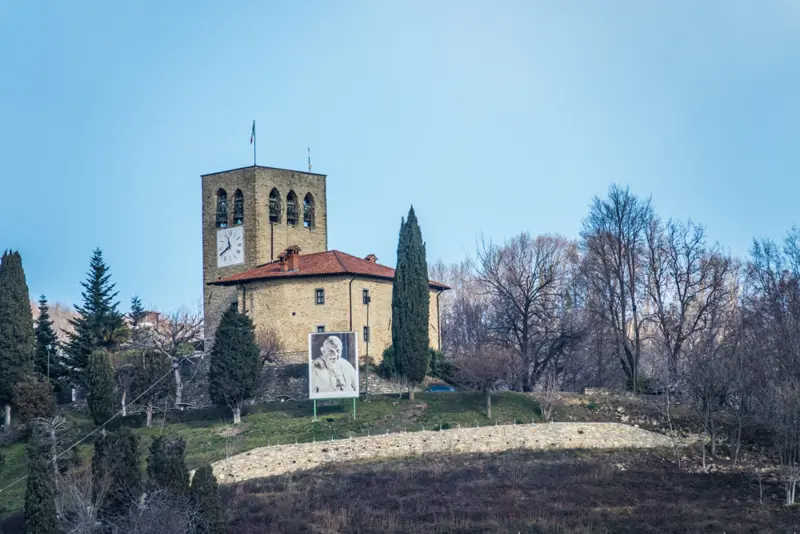
To choose the ideal location you can do a search between the hotels of Sotto il Monte, or those of the city of Bergamo (which is about 18 km), but also those in the towns of the province of Bergamo. Finally, also near the Milan Bergamo airport, the nearest airport to reach Sotto il Monte.
WHERE TO GO in sotto il monte
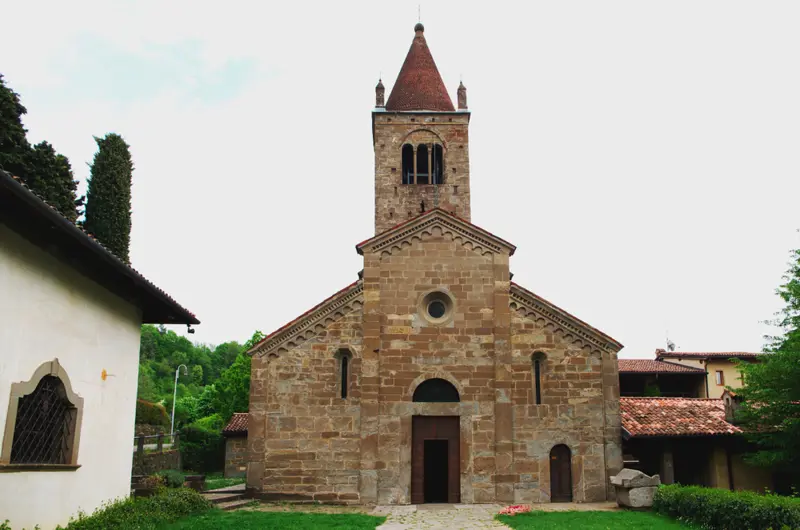
Church of Sant'Egidio in Fontanella (Bg)
The Church of Sant'Egidio in Fontanella is an example of the Romanesque style in Bergamo area that is also found in the small Church of San Tomè in Almenno San Bartolomeo, not far away. Inside, the walls contain remains of frescoes dating back to the fifteenth and sixteenth centuries. Over the years the church has suffered various damage and numerous restorations.
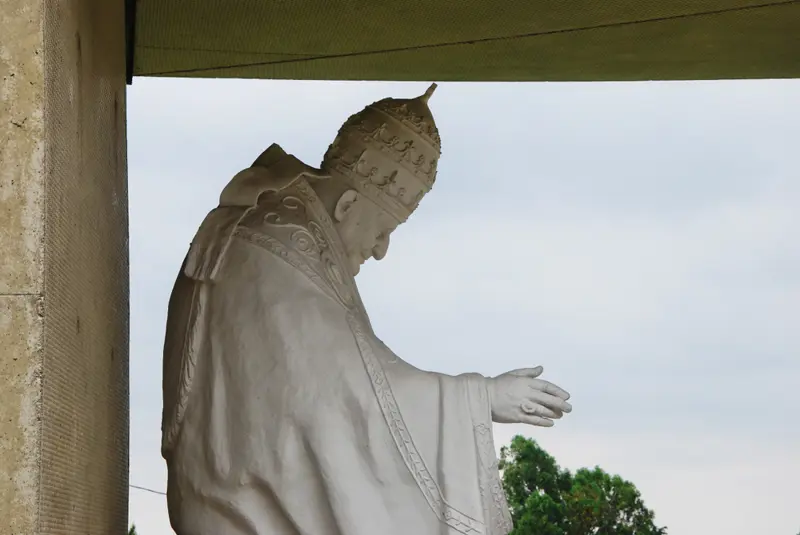
House of the Pilgrim - Sotto il Monte (Bg)
Designed by architect Paolo Belloni, the House of the Pilgrim in Sotto il Monte Giovanni XXIII, is located on the Pacem in Terris avenue, at the entrance to the town. It is a modern space dedicated to welcoming pilgrims, a point of reference for the faithful and providing information for living a profound journey of faith.
Excursions
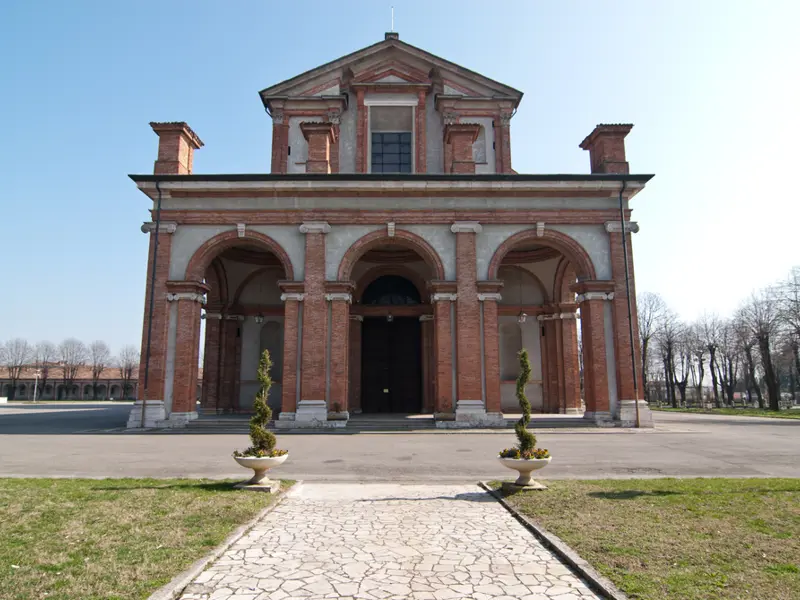
Sanctuary of Caravaggio (Bg)
In Caravaggio, in the province of Bergamo, stands the Basilica of Santa Maria del Fonte, a monumental building dedicated to the worship of Santa Maria del Fonte which, according to the Catholic tradition, appeared here on May 26, 1432, in front of a young peasant woman. Pilgrims can live an authentic experience of faith in this Sanctuary.
The pilgrimage involves passing through the most significant places of the Sanctuary, such as: the Fountain (pause in prayer on the apparition site to mark itself with the water that flows from the source); the Crucified (here an examination of conscience is performed before approaching the sacrament of Penance); the arcades (to be covered by reciting the Rosary); the basilica (where the sacrament of Penance is celebrated).
The pilgrimage involves passing through the most significant places of the Sanctuary, such as: the Fountain (pause in prayer on the apparition site to mark itself with the water that flows from the source); the Crucified (here an examination of conscience is performed before approaching the sacrament of Penance); the arcades (to be covered by reciting the Rosary); the basilica (where the sacrament of Penance is celebrated).
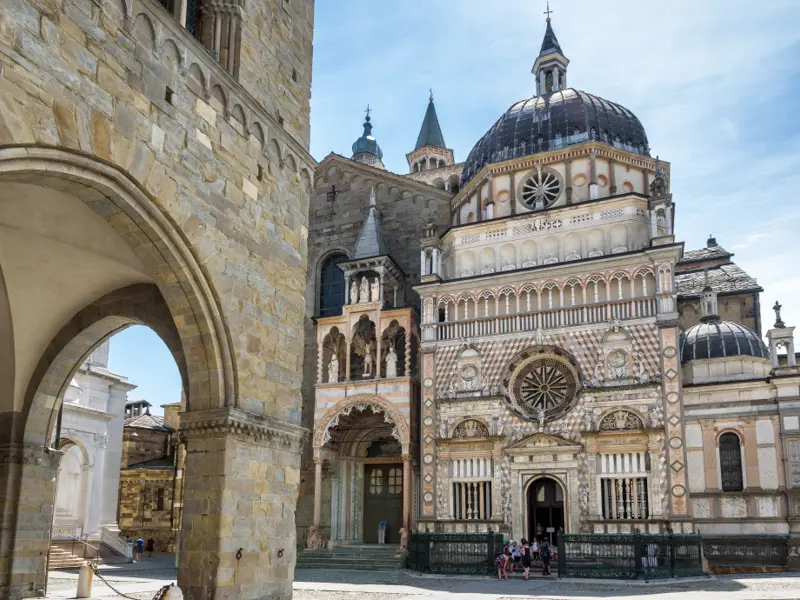
Bergamo - Upper city
Piazza Vecchia is the first place to visit Città Alta, the historical city of upper Bergamo. There are many elements of interest in this square including the fountain donated by the Venetian podestà Alvise Contarini; the civic tower built in the XII century; the municipal library building (built in the seventeenth century as a new town hall), and the Palazzo della Ragione, dating back to the second half of the XII century. Piazza del Duomo, overlooked by the Cathedral, the Baptistery, the Chapel where the condottiere Bartolomeo Colleoni is entombed, and the Romanesque Basilica of Santa Maria Maggiore, whose ornate Baroque interior houses a works of art including fourteenth century frescoes, marquetry panels created from drawings by Lorenzo Lotto, Flemish and Florentine tapestries and the tomb of Gaetano Donizetti. Discover: Bergamo.
Partnership with GetYourGuide
Tours and excursions
News & Useful info
You might be interested in
Destinations found in the vicinity
Other destinations
Airports nearby Sotto il Monte



